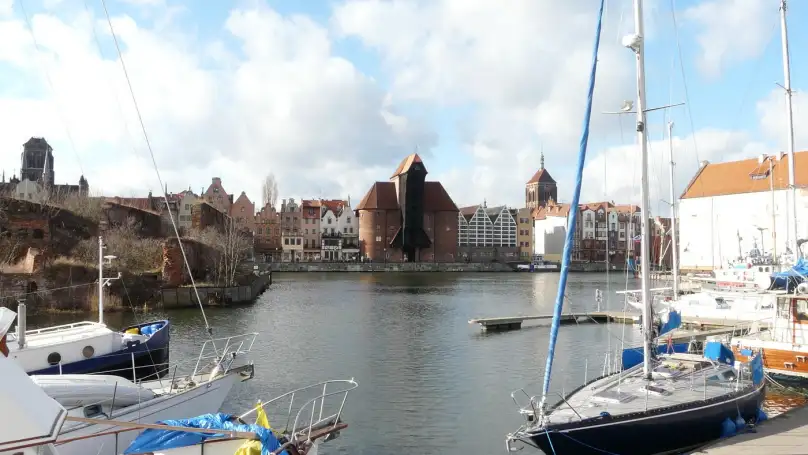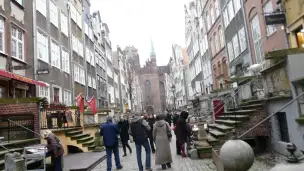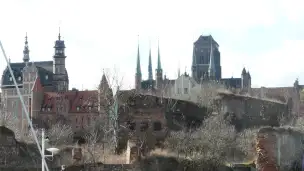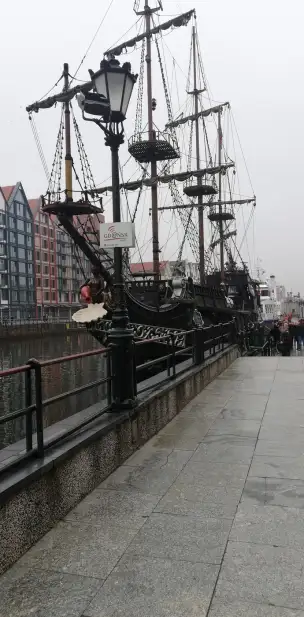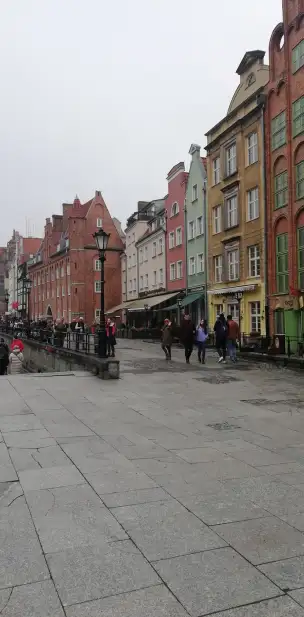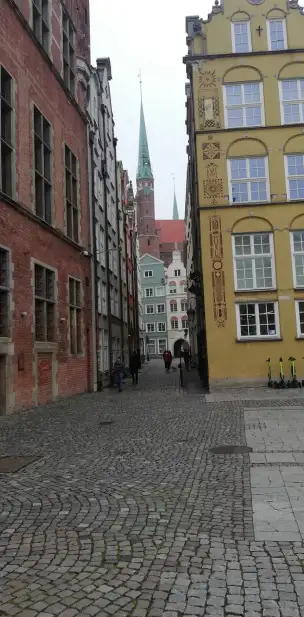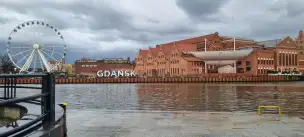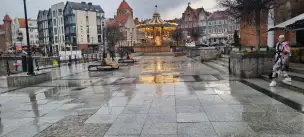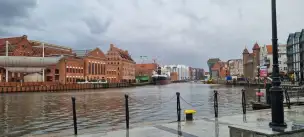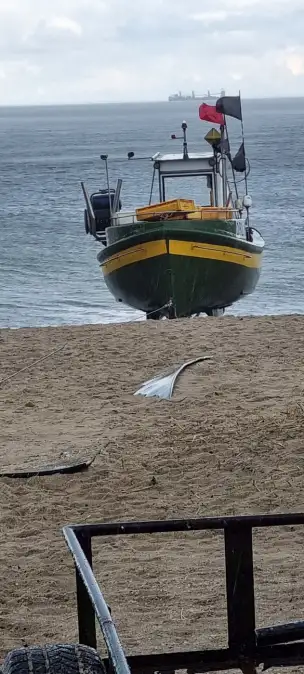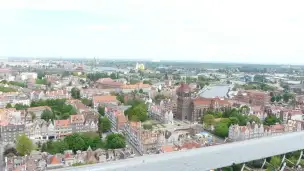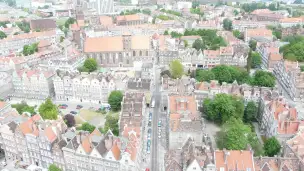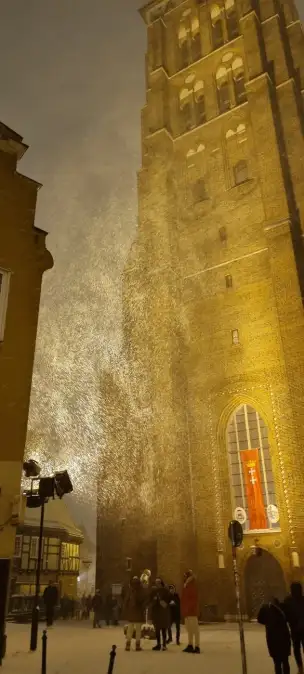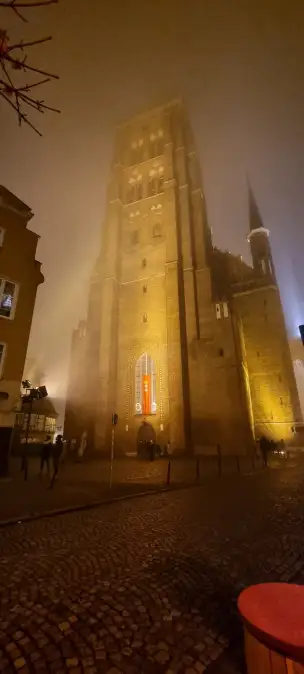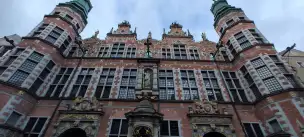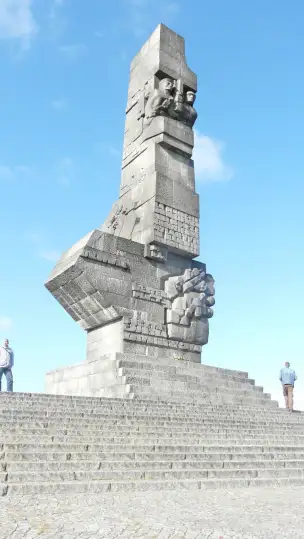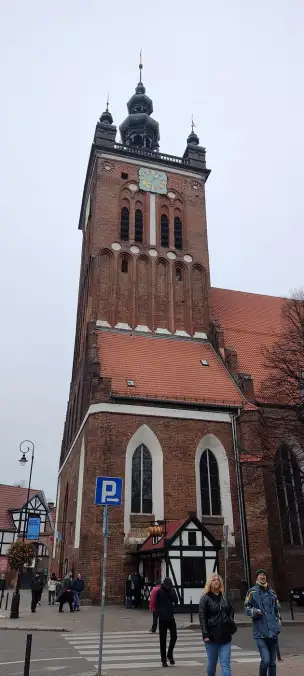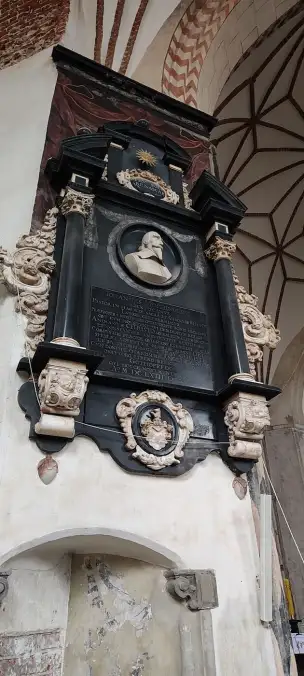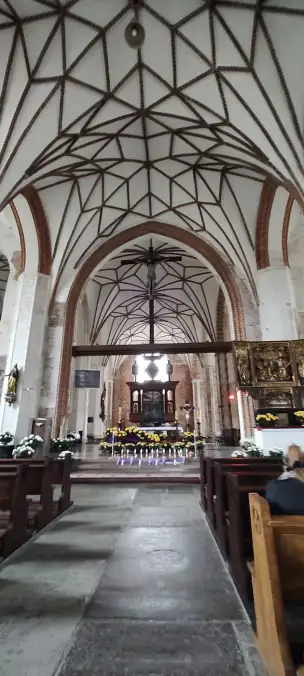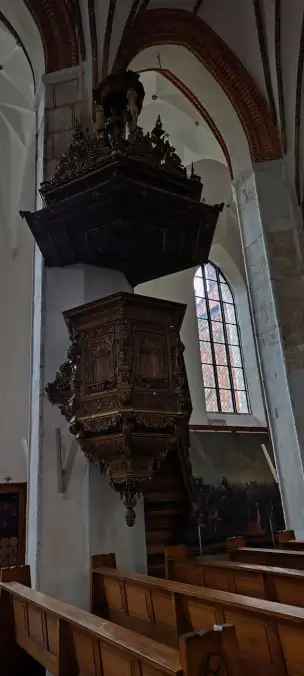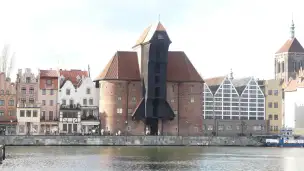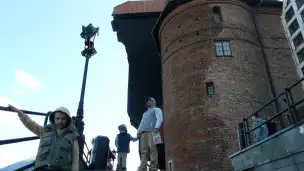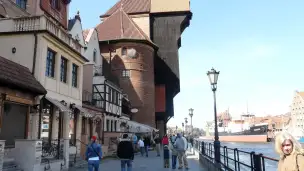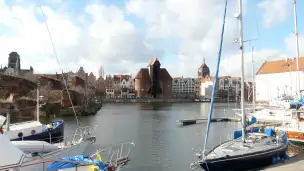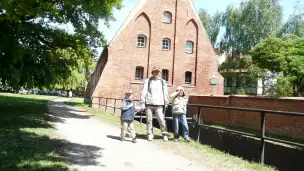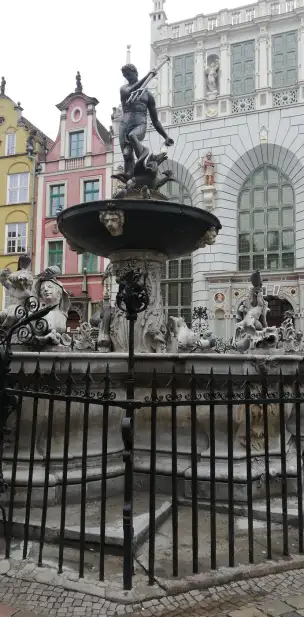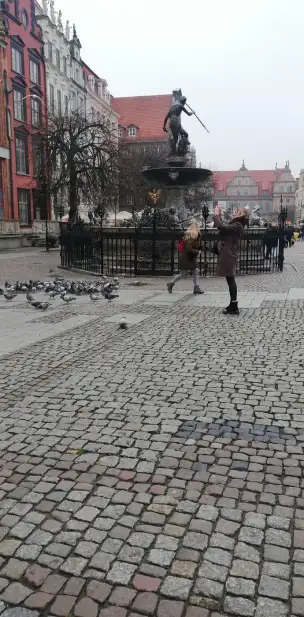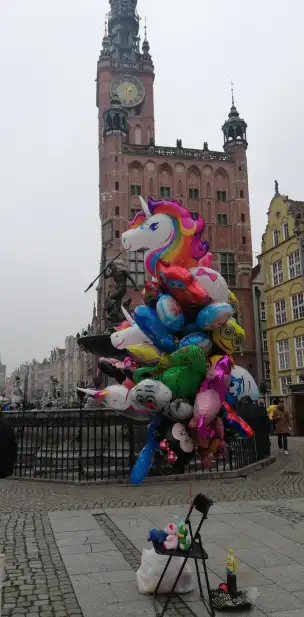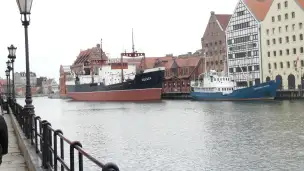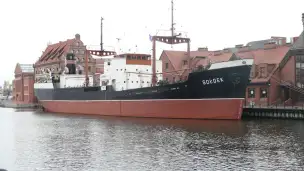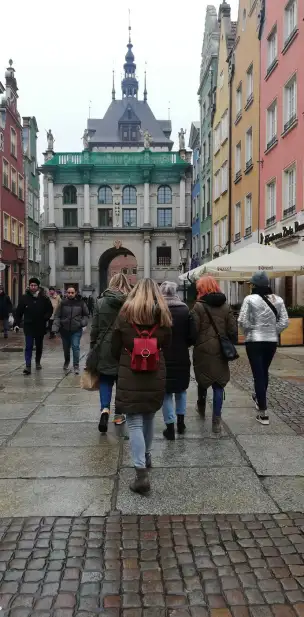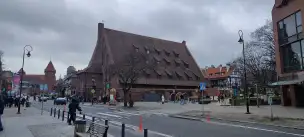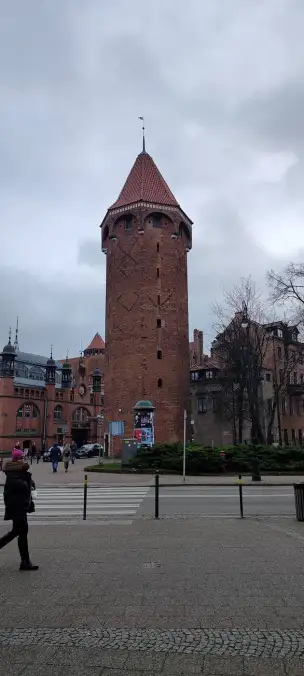A city on the Baltic Sea, Gdańsk is one of Poland’s largest ports.
It is known for its rich history and landmarks, including the distinctive Old Town with its iconic Town Hall, Neptune’s Fountain, and colorful tenement houses. Gdańsk is also home to the famous Highland Gate (Brama Wyżynna), a symbol of the city, as well as many other historical sites such as St. Mary’s Church, the Artus Court, and the Golden Gate.
In recent decades, Gdańsk has developed into an important cultural and economic center. It hosts numerous institutions, including a university, a theatre, and a philharmonic orchestra. It is also a major seaport engaged in international trade.
The city is closely linked to many significant historical events, such as the outbreak of World War II, which began at Westerplatte — a fortress near the city center — and the birth of the Solidarity movement, which opposed communist rule in Poland.
The Basilica of the Assumption of the Blessed Virgin Mary in Gdańsk
St. Mary’s Basilica in Gdańsk is one of the largest churches in Europe. Built in the Gothic style during the 14th and 15th centuries, it is considered one of the most important monuments in the city. Its massive scale and imposing architecture attract thousands of visitors from around the world every year.
The basilica is 105 meters long and 66 meters wide. Its interior is adorned with numerous works of art, including sculptures, paintings, and stained-glass windows. The church houses two notable altars: the main altar of the Assumption of the Blessed Virgin Mary and a side altar dedicated to Saint Adalbert (St. Wojciech).
The most distinctive feature of the basilica is its 82-meter-high tower, which contains one of the tallest church bells in the world. From the top, visitors can enjoy a stunning view of Gdańsk and the Baltic Sea. Every day at noon, a bugle call (hejnał) is played from the tower, echoing across the Old Town.
The Great Armoury
The Great Armoury in Gdańsk (German: Große Zeughaus, English: Great Armoury) is one of the most beautiful and valuable examples of Mannerist architecture in the city. It is located on Piwna Street, right next to St. Mary’s Church, in the very heart of the Main Town.
Constructed between 1600 and 1609, it originally served as a municipal arsenal — a storage place for weapons and ammunition. It was designed by Antoni van Obberghen, a Flemish architect active in Gdańsk.
The Armoury reflected the city’s need for defense — as a wealthy port city, Gdańsk maintained its own military forces and fortifications.
Westerplatte
Westerplatte is a peninsula in Gdańsk that became the site of one of the most significant events in Polish history — the outbreak of World War II. In 1939, Westerplatte was defended by 182 Polish soldiers who resisted the German army attacking from land, air, and sea. Despite having no real chance of victory, the Polish defenders held their position for seven days before being forced to surrender.
Today, Westerplatte is an important site of national remembrance. The peninsula is home to numerous monuments, museums, and memorials dedicated to the events that took place there. The most notable of these is the Westerplatte Museum, opened in 1966, which presents the history of the defense of the peninsula and the events surrounding it.
Westerplatte is also the site of the Monument to the Defenders of the Coast — the largest monument in Poland and one of the largest of its kind in the world. The monument depicts a group of Polish soldiers defending their position at Westerplatte and stands as a powerful symbol of Polish heroism and sacrifice during World War II.
Church of St. Catherine – Rectoral Church of the Carmelite Fathers
Founded in the 13th century (likely around 1227), this is the oldest parish church in Gdańsk. The building is primarily Gothic in style, although it has been rebuilt and modified over the centuries.
During the Reformation, the church was taken over by Protestants, who managed it until the end of World War II. After 1945, it returned to Catholic hands, and since 1980, it has been under the care of the Carmelite Fathers.
The church's impressive 76-meter-high tower was an important landmark in Gdańsk for centuries. Inside, visitors can admire original epitaphs, tombs, and works of religious art. Unfortunately, part of the interior furnishings was destroyed during the war.
The Gdańsk Crane / Żuraw Gate
One of Gdańsk’s most iconic landmarks and a symbol of the city's historic maritime character. It is also the oldest surviving port crane in Europe.
The Crane is a combination of a Gothic brick gate tower and a wooden superstructure that housed the lifting mechanism and crane beam. The crane’s maximum height is about 27 meters, and it was capable of lifting loads of up to 4 tons to a height of 11 meters.
The Crane was heavily damaged during the siege of Gdańsk in 1945. Only the brick walls survived; the wooden structure was destroyed by fire. In the 1950s, the historic crane was rebuilt, faithfully restoring its original appearance and details.
Mały Młyn (Small Mill)
A historic building located in the Old Town on Rajska Street, near the Great Mill (Wielki Młyn).
The Small Mill was built in the 14th century, around the year 1400, as part of the water management infrastructure associated with the Radunia Canal — an artificial branch of the Radunia River created in the 13th century to serve the needs of the city.
It functioned primarily as a granary, supporting the operations of the nearby Great Mill.
Długi Targ (Long Market)
One of the most prestigious and historically significant places in the city. It is part of the Royal Route, which stretches from the Golden Gate (Brama Złota), along Długa Street, to the Green Gate (Zielona Brama).
Długi Targ served for centuries as Gdańsk’s main marketplace and a central meeting point for residents and visitors alike.
SS Sołdek
The SS Sołdek is a remarkable monument of engineering and a symbol of Poland's maritime industrial history. It was the first seagoing ship built entirely in a Polish shipyard after World War II. The vessel began service in 1949, sailing for Polish Ocean Lines (Polska Żegluga Morska). It primarily transported coal from Polish ports to Western Europe and returned with iron ore.
Since 1985, Sołdek has been part of the National Maritime Museum in Gdańsk. It is moored on the Motława River, near the Gdańsk Crane (Żuraw).
Golden Gate (Brama Złota)
The Golden Gate in Gdańsk (German: Langgasser Tor) is one of the city's most important and prestigious gates, located on Długa Street at the beginning of the Royal Route (Trakt Królewski).
Built between 1612 and 1614 on the site of the earlier Gothic Long Street Gate from the 14th century, the structure was financed by the City Council and designed by Abraham van den Blocke, a Flemish architect.
The gate was part of the city’s inner defensive walls and controlled access to the center of Gdańsk.
Great Mill in Gdańsk (Wielki Młyn)
A massive Gothic red-brick building constructed on a rectangular plan measuring about 26 × 41 meters.
It was built around 1350 by the Teutonic Order, which ruled Gdańsk at the time. It became one of the largest water mills in Europe, powered by the Radunia Canal — an artificial waterway specifically routed through the city.
The mill operated with 18 water wheels, allowing for efficient processing of large quantities of grain. After the Teutonic Knights were expelled, the mill became the property of Gdańsk’s City Council and remained a vital part of the local economy for centuries.
St. Hyacinth`s Tower (Baszta Jacek)
Baszta Jacek in Gdańsk (German: Jackenturm) is one of the best-preserved medieval defensive towers in the city. It is located on Katarzynki Street, near Grobla IV, in the western part of the Main Town, close to St. Catherine’s Church.
The tower was built at the turn of the 14th and 15th centuries as part of the city's inner fortification system. Its name comes from Saint Hyacinth (św. Jacek Odrowąż), a Dominican monk who, according to tradition, was the patron of this area of the city — a nearby Dominican monastery once stood here.
The tower was one of dozens of defensive towers and bastions forming the perimeter wall of the Main Town.




